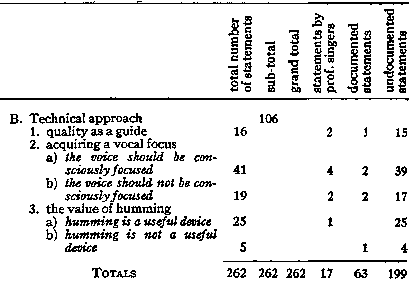Training the Singing Voice - online book
An exploration of the theories, methods & techniques of Voice training.
| Share page | Visit Us On FB |
|
CONCEPTS OF RESONANCE i3i
Table Four (continued) |
||
|
|
||
 |
||
|
cavities, the chest cavity also being considered a resonator of importance. [Dodds and Lickley 139, p. 33]
It is hardly necessary to enter into a detailed discussion of the acoustical" properties of resonators since such information is readily available in any good encyclopedia. It is more important here that the teacher of singing receive a few basic acoustical facts that will guide his choice and use of vocal training methods. The following brief acoustical r£sum£ is therefore given, based upon the experimental findings of recent investigators in this field.
ACOUSTICAL FACTORS
Tone travels, but the vibrating or pulsating particles of air which transmit the sound waves do not travel. [Brown 68] The wave of sound is not a draught or current of air to be directed at will. It is more like the wave that passes over a field of wheat when wind is blowing. Each stalk sways a bit but returns. Similarly, each particle of air swings to and fro on a fixed axis. As it is set in motion by vibrations it imparts its energy to adjacent particles which in turn continue to transmit the vibratory energy in all directions simultaneously in the form of expanding concentric |
||